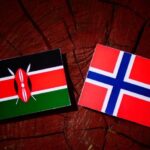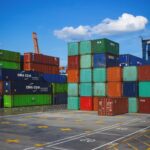It was said of him that where he walked, the heart of Kenya walked too. Raila Amolo Odinga (7 January 1945 – 15 October 2025) was Kenya’s enduring opposition icon, a Prime Minister who helped draft its modern constitution, and a statesman whose influence stretched beyond borders.His life was defined by relentless advocacy, constitutional reform, and the push for democracy.
Early Life and Education
Born in Maseno, Nyanza province, to Jaramogi Oginga Odinga (Kenya’s first Vice-President 1964-1966) and Mary Juma Odinga, Raila grew up in a politically charged household where activism was part of daily life. His father, Jaramogi was a leading voice in independence struggles and later in opposition before splitting from the ruling party KANU to chart a dissenting course. He attended local schools before going abroad to East Germany in the 1960s, where he trained as a mechanical engineer. Upon return, he lectured at the university of Nairobi, ran businesses (notably in LPG cylinder manufacturing), and rose to Deputy Director at the Kenya Bureau of Standards by 1978.
Detention and Exile
After a failed coup attempt in 1982, Raila was detained without trial under President Daniel Arap Moi’s government, a crucible that cast him as both a martyr and an activist. His detention lasted several years and was a pivotal moment in his political maturation.In the early 1990s, he spent time in exile before returning to participate in multiparty democracy. He was a vocal opponent of one-party rule, political repression and the constraints of a tightly controlled political space. His network of alliances and civil society actors expanded during these years.
Rise to National Politics
Elected as Member of Parliament for Lang’ata in 1992, Raila Odinga quickly established himself as one of the most dynamic figures in Kenya’s rebirth as a multiparty democracy. The early 1990s were a time of political turbulence and transformation when citizens, long silenced under one-party rule, demanded accountability and reform. Odinga’s fiery rhetoric, grassroots mobilization, and deep connection with ordinary Kenyans made him a powerful voice for change. His party alliances shifted over the years from the Forum for the Restoration of Democracy (FORD) to the National Development Party (NDP), and later the Orange Democratic Movement (ODM) reflecting his strategic adaptability in Kenya’s fluid political landscape.
Raila ran for president five times in 1997, 2007, 2013, 2017, and 2022 each contest amplifying his national footprint even in defeat. For millions, he came to symbolize the unfinished business of Kenya’s democracy: the tension between hope and heartbreak. His 2007 campaign marked a watershed moment in Kenyan history. Disputed election results ignited weeks of ethnic and political violence that left more than 1,300 people dead and hundreds of thousands displaced. Though the tragedy shook the nation to its core, it also became the crucible for far-reaching reforms from the creation of an independent electoral body to the promulgation of the 2010 Constitution, which decentralized power and entrenched human rights.
The crisis also revealed Odinga’s evolution from protest politician to pragmatic statesman. His decision to enter a power-sharing agreement with President Mwai Kibaki in 2008, assuming the newly created post of Prime Minister, demonstrated a willingness to prioritize national healing over personal ambition. It was a choice that reshaped Kenya’s governance structure and solidified his image as both a disruptor and a stabilizer a paradox that would define the rest of his career.
Prime Ministry and Constitutional Reform
From 2008 to 2013, Raila Odinga served as Kenya’s second Prime Minister in a grand coalition government formed after the deadly 2007–2008 post-election violence. The coalition, brokered under international mediation led by Kofi Annan, symbolized a delicate peace a power-sharing pact between Odinga and President Mwai Kibaki meant to stabilize a fractured nation. Despite the uneasy alliance, Odinga’s years in office marked one of the most reform-driven periods in Kenya’s modern history.
At the heart of his tenure was the historic 2010 Constitution, which Odinga fiercely championed from conception to promulgation. He advocated for the pillars that now define Kenya’s governance: devolution of power to the counties, judicial independence through the establishment of the Supreme Court, and a robust Bill of Rights enshrining civil liberties and gender equity. His push for decentralization aimed to correct decades of economic and political exclusion that had left vast regions underdeveloped and disillusioned.
Beyond governance reform, Odinga’s leadership extended to tangible development policy. He prioritized infrastructure expansion particularly in energy and transport and strengthened frameworks for transparency in public office. His administration oversaw the early stages of projects that would later define Kenya’s modernization, from road networks to regional trade corridors. He also pushed for inclusion of marginalized communities and youth in national development, a stance that earned him enduring loyalty among reform-minded Kenyans. Though tensions with President Kibaki’s allies often slowed implementation, Odinga’s impact on Kenya’s democratic architecture remains undeniable. The 2010 Constitution became his most enduring political legacy a living document that redefined citizenship, power, and accountability in Kenya.
Handshake, Later Years & Continental Ambition
In March 2018, Raila Odinga shocked the nation when he and President Uhuru Kenyatta publicly clasped hands on the steps of Harambee House a symbolic gesture that came to be known simply as “The Handshake.” After years of fierce rivalry and the turbulent 2017 election, the move was framed as an act of national healing. The two leaders pledged to steer Kenya toward reconciliation, unity, and institutional reform through the Building Bridges Initiative (BBI). For Odinga, the Handshake represented a statesmanlike pivot a decision to prioritize national stability over perpetual political contest. Yet, it also sparked controversy. Critics accused him of diluting his long-held reformist credentials and merging too closely with the political establishment he once opposed. Supporters, however, saw it as a final evolution of his leadership: a shift from protest to peacebuilding, from opposition to mentorship of the next political generation.
In his later years, Odinga expanded his influence beyond Kenya’s borders. In 2024, he declared his candidacy for Chairperson of the African Union Commission, signaling his enduring ambition to shape continental governance. Drawing on decades of political experience and Pan-African advocacy, he campaigned on a platform emphasizing regional integration, democratic accountability, and sustainable development. Although his bid faced intense geopolitical competition, it reaffirmed his identity as a continental statesman one whose voice resonated far beyond Nairobi.
Even as age and shifting public moods tested his political strength, Raila Odinga remained a fixture of Kenya’s conscience a figure simultaneously admired and debated, yet impossible to ignore.
Family, Persona & Private Life
Married to Ida Anyango Oyoo (née Ida Betty Anyango Oyoo) since 1 September 1973. They had four children: Fidel Castro (1973-2015), Rosemary, Raila Junior, and Winnie. Known for charismatic oratory, engineering-informed pragmatism, and cultivating a public image that mixed defiance with empathy. He was especially admired in Luo-Nyanza and among youth who saw him as a voice for their aspirations.
Death and National Reaction
On 15 October 2025, Raila Odinga died aged 80. Reports from Reuters and AP confirm he suffered a cardiac arrest while undergoing treatment in Kochi, Kerala, India.Devamatha Hospital, Kerala, India, received him after he collapsed during a morning walk. The hospital stated he could not be revived.
Across Kenya and abroad, the announcement prompted nationwide mourning. Political leaders from all sides, civil society, and ordinary citizens offered tributes. Flags, vigils, and official statements shared a narrative of respect and loss.
Legacy: What Raila Leaves Behind
Democratic institutions: Raila’s activism helped drive the transition to multiparty rule and the adoption of the 2010 Constitution, which reshaped Kenya’s governance structure. Political pluralism: As opposition leader over many years, he kept pressure on successive governments for transparency, inclusion, and electoral integrity.
Service and social outreach: Through ODM and his networks, he championed education, marginalized communities, and infrastructure equity.Criticisms and complexity: Compromises (e.g. Handshake), repeated electoral losses, and perceptions of being part of the establishment in later years feature in debates about his legacy.
Related Posts
-
Norway and Kenya strengthen environmental ties
̶ with new initiatives for environmental co-operation
-
Raila Odinga’s return: Rebuilding from exile, redefining opposition, and the wounds that shaped a nation
Part II of Inside Raila Odinga’s Years of Detention and Exile — tracing his return…
-
Norwegian Exports to Kenya: Fueling Growth Through Innovation and Sustainability
Strengthening Norway-Kenya trade relations| key exports & emerging opportunitiesNorway-Kenya Trade: Quality Over VolumeKenya is one…


